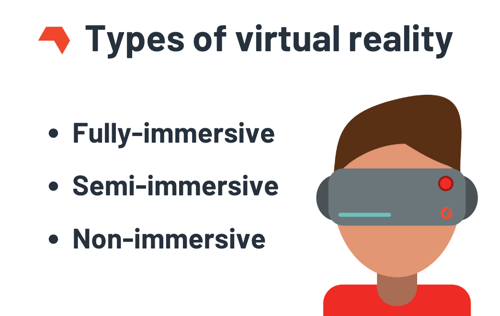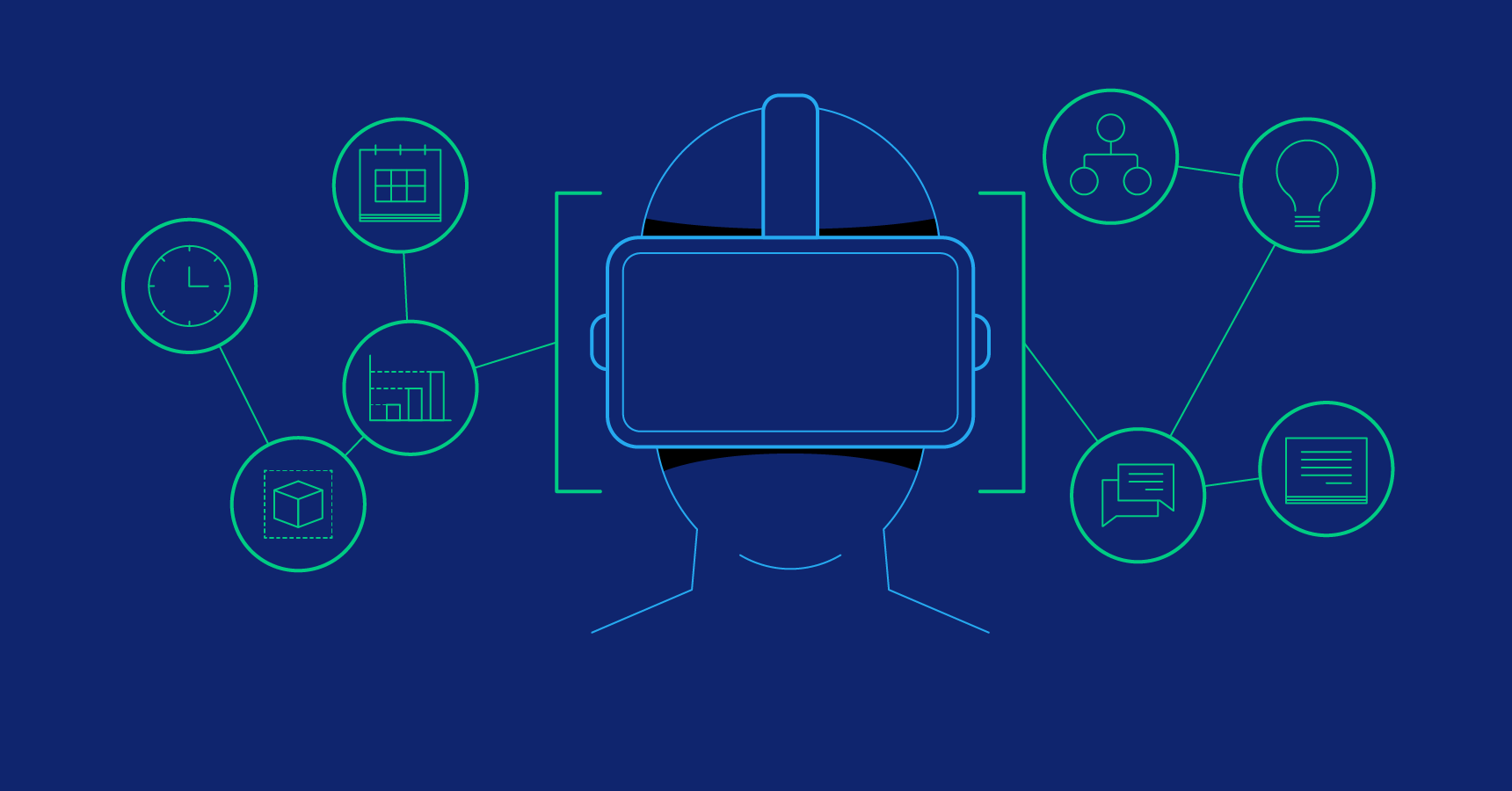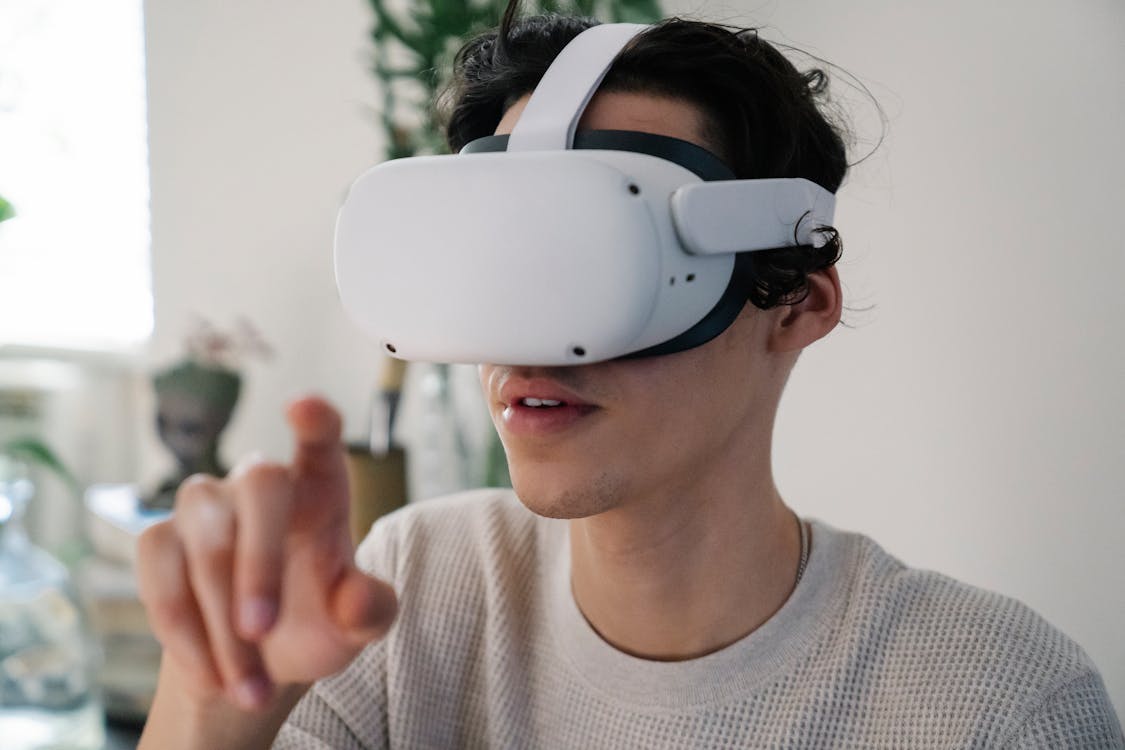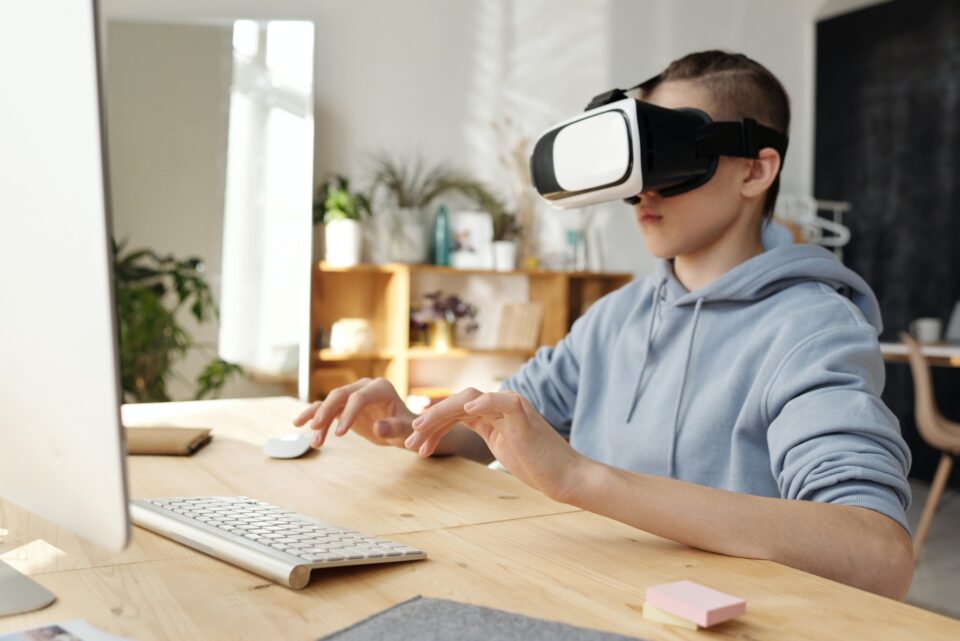Virtual Reality (VR) is a computer-generated environment with realistic-looking images and objects that gives the viewer the feeling of being completely immersed in their surroundings. This environment is viewed through the use of a Virtual Reality headset or helmet. We may use virtual reality to immerse ourselves in video games as if we were one of the characters, learn how to conduct heart surgery, and improve the quality of sports training to boost performance.
Despite the fact that it appears to be very futuristic, its beginnings are not as recent as we might imagine. Many people believe that Sensorama, a machine with a built-in seat that played 3D movies, emitted odors, and generated vibrations to make the experience as realistic as possible, was one of the first Virtual Reality gadgets. The idea was first proposed in the mid-1950s. Over the years, subsequent technological and software advancements resulted in a gradual change in both device and interface design.
3 types of Virtual Reality

Extended reality refers to all three varieties of virtual reality, including non-immersive, semi-immersive, full immersive, and mixed reality (XR). Virtual reality experiences are divided into three categories, each of which offers a distinct level of computer-generated realism.
The following are the three main VR categories:
Non-Immersive Virtual Reality: Because it is so prevalent, this category is sometimes missed as VR. Non-immersive VR technology uses a computer-generated virtual environment in which the user is aware of and controlled by their physical surroundings at the same time. Non-immersive VR is exemplified by video games.
Semi-Immersive Virtual Reality: This sort of VR gives you a part of the experience in a virtual environment. With graphics computing and huge projector systems, such as flight simulators for pilot trainees, this type of VR makes sense for educational and training reasons.
Fully Immersive Virtual Reality: At the moment, there are no fully immersive VR technologies available, but technological advancements are so rapid that they could be only around the corner. From sight to sound to olfactory sensations, this sort of VR creates the most realistic simulation experience. Car racing games are an example of immersive virtual reality that allows the user to experience the sensations of speed and driving ability. VR has been developed for gaming and other forms of entertainment, but its use in other fields is growing.
Specific shared traits are included in the definition of virtual technology. They’re not just immersive, but they’re also computer-generated, multidimensional, and interactive.
Differences over Augmented Reality
Despite the fact that Virtual Reality is a decades-old technology, many people are still unfamiliar with it. It’s also not uncommon to mix up virtual reality and augmented reality.
The fundamental distinction between the two is that VR creates a virtual environment in which we may immerse ourselves using a headset. It’s entirely immersive, and everything we see is part of an artificially manufactured environment made up of visuals, sounds, and other elements. In augmented reality (AR), on the other hand, our own world becomes the framework inside which objects, images, and other media are inserted. Everything we see is in a real environment, therefore wearing a headset may not be strictly necessary. Pokémon Go is the clearest and most well-known example of this principle.
Mixed reality, on the other hand, is a hybrid of the two worlds. This hybrid technology, for example, allows users to see virtual things in real life and create an experience in which the physical and digital worlds are virtually indistinguishable.
Working of VR
Virtual reality (VR) mixes hardware and software to create realistic experiences that “trick” the eye and brain. The generated virtual environment is created by software, which provides sensory stimulation and simulation such as noises, touch, smell, and heat intensity.
3D – VR Experience and Function of Eye and Brain

The production of immersive experiences is modelled after how the eye and brain produce pictures. Because human eyes are three inches apart, they generate two somewhat distinct perspectives. To create a sensation of depth or stereoscopic display, the brain combines those viewpoints.
With a pair of exact photos from two separate views, VR applications may recreate that phenomena. Instead of a single image filling the entire screen, it displays two identical images, one for each eye, to offset the vision. The viewer’s brain is tricked into believing there is a sense of depth and accepting the illusion of a multi-dimensional image thanks to virtual reality technology.
Hardware used for Virtual Reality
Virtual reality hardware includes controllers, headsets, hand trackers, treadmills, and 3D cameras for developers, among other things.
VR Headset
A virtual reality headset, such as goggles, is a head-mounted device. A virtual reality headset is a visual display. Headsets frequently contain cutting-edge audio, eye or head motion-tracking sensors, and cameras.
Headsets are divided into three categories:

PC VR Headsets: PC VR headsets are the most expensive since they provide the most immersive experiences. These headsets are usually powered by external hardware and are cable-tethered from the headset. High-quality sound and vision, as well as head tracking, are provided via the dedicated display, built-in motion sensors, and an external camera tracker.
All-in-one or standalone VR headsets are wireless, integrated pieces of gear that can be used with tablets or phones. Wireless virtual reality headsets aren’t always self-contained. Some systems use wireless transmission from nearby consoles or PCs, while others rely on wired packs carried in a pocket or fastened to clothes.
Mobile Headsets: These shell devices cover a smartphone with lenses. The lenses divide the screen to generate a stereoscopic image, converting a smartphone into a virtual reality device. Mobile headsets are reasonably priced. Because the phone performs the processing, no wires are required. Phones don’t provide the best visual experiences, while VR on a game console or PC is more powerful. They don’t offer any kind of positioning tracking.
Applications of VR and its Business
VR has had an impact on industries ranging from medical to tourism, and it is a key component of many companies’ digital transformation initiatives. According to a November 2020 Statista analysis, industry investments in industrial maintenance and training in the United States are expected to reach $4.1 billion in 2024.
- Training
- Travel
- Real Estate
- Healthcare
- Retail
- Military
- Entertainment
- Architecture
- Art
- Aviation
- Aerospace
Benefits of Virtual Reality
Practical Training: Virtual reality is a safe way to train for difficult scenarios. Before going into the field, firefighters, pilots, astronauts, and police officers can practice in a safe environment. Immersive experience shortens timelines, allowing learners to become professionals faster.
Engagement and Connection: VR provides consumers with an engaging and enjoyable experience.
Virtual Meetings: Virtual meetings save time and money while also fostering a sense of collegiality.
“Tryout” Capability: With virtual reality, buyers’ regret could be a thing of the past. Virtual reality allows you to equip your home, test drive a car, and try on wedding bands without ever leaving your house.




